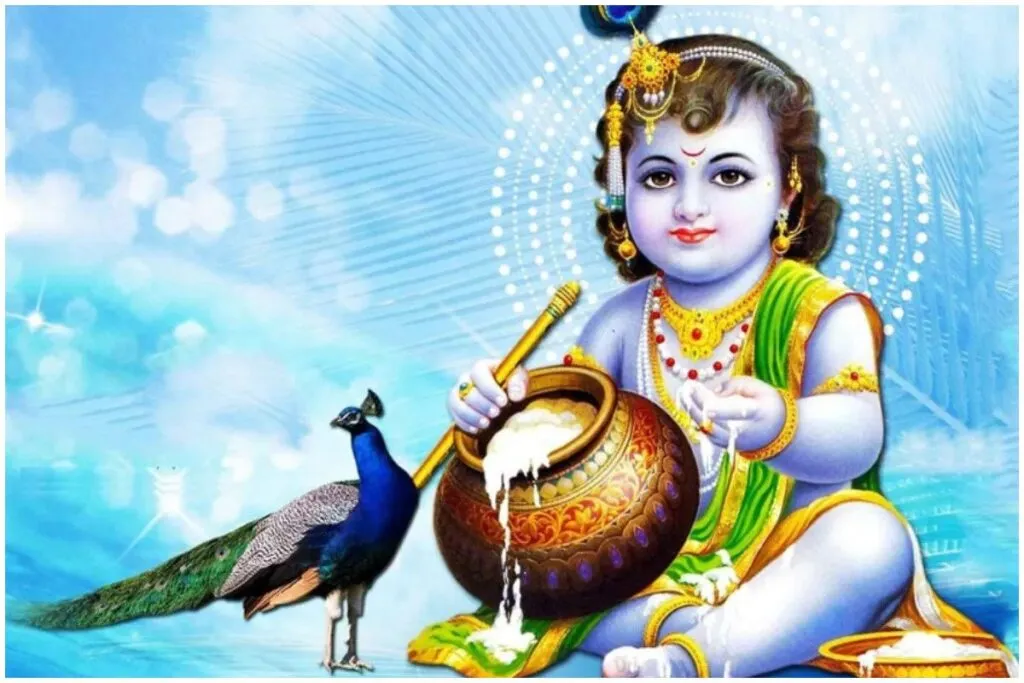
Janmashtami, also known as Krishna Janmashtami, is one of the most cherished Hindu festivals, marking the birth anniversary of Lord Krishna, the eighth incarnation (avatar) of the god Vishnu. Observed with unmatched devotion, color, and energy, Janmashtami unites millions of devotees across India and around the world in joyous celebration and spiritual reflection.
Date and Significance in 2025
In 2025, Janmashtami falls primarily on Saturday, August 16, aligning with the Ashtami (eighth day) of Krishna Paksha (waning moon) in the Hindu month of Bhadrapada. The festival’s timing holds great importance—rituals reach their peak at midnight, the moment believed to be Krishna’s exact birth time. Major temples and households start observances on the night of August 15, culminating in midnight celebrations on August 16.
The Legend of Krishna’s Birth
According to the Bhagavata Purana, Janmashtami celebrates the divine birth of Krishna. The story unfolds with Princess Devaki and her husband Vasudeva imprisoned by her brother, the tyrant King Kamsa, who fears a prophecy that Devaki’s eighth son will end his rule. After the tragic loss of her six children, her seventh child, Balarama, is miraculously transferred to another womb, and then Krishna is born. At the miraculous hour of his birth, prison doors fling open, guards fall asleep, and Vasudeva carries baby Krishna across the Yamuna river to the safety of Gokul, where he is raised by his foster parents, Yashoda and Nanda.
Customs and Celebrations
Janmashtami is a vibrant blend of spiritual observances and communal festivities, expressing the profound love and joy associated with Krishna.
- Fasting: Most devotees observe a strict fast (Nirjala or Phalahaar), breaking it only after midnight, symbolizing self-discipline and devotion.
Midnight Puja: The heart of the festival is the midnight ceremony. Devotees bathe and adorn Krishna idols, place them in decorated cradles, and perform aarti (ritual offering of light), singing bhajans and devotional songs. Special offerings of butter, milk, and sweets—Krishna’s favorites—are prepared.
Jhankis and Rasa Lila: Homes and temples create elaborate jhankis (dioramas) depicting the life of Krishna—his birth in Mathura, his childhood in Gokul, and playful scenes with cowherds. In Mathura, Vrindavan, and other Krishna centers, Rasa Lila performances (dance-dramas) recreate episodes from Krishna’s youth, fostering community spirit and joy.
Dahi Handi: In many regions, especially Maharashtra, the second day features the Dahi Handi event. Inspired by Krishna’s childhood exploits as “Makhan Chor” (butter thief), teams form human pyramids to break high-hanging pots of curd and butter, celebrating teamwork, exuberance, and the legend of Krishna.
Decorations: Homes, temples, and streets are decorated with flowers, kolams (rice flour designs), lights, and sometimes with small footprints symbolizing Krishna’s arrival.
Chanting and Recitation: Recitals of the Bhagavad Gita, singing of Krishna’s 108 names, and continuous chanting create a devotional ambiance, especially in temples dedicated to Krishna in Mathura, Vrindavan, Udupi, and across India.
Global Reach and Cultural Unity
Janmashtami transcends regional boundaries and is celebrated globally—in Nepal, Bangladesh, Mauritius, Fiji, Trinidad, the UK, the US, and wherever Indian communities thrive. The festival builds cultural bridges by focusing on Krishna’s teachings: devotion (bhakti), righteousness (dharma), compassion, and joy.
The Deeper Meaning
At its core, Janmashtami is a reminder of Krishna’s timeless message from the Bhagavad Gita: the triumph of good over evil, the power of faith, the joy of righteous action, and the enduring value of love and compassion in one’s life. The festival invites devotees to reflect on these ideals and aim for spiritual growth and unity.
Whether through fervent midnight prayers, gleeful breaking of the handi, or the collective singing of Krishna’s glories, Janmashtami embodies India’s rich devotional culture and continues to inspire millions to live by the values embodied by Lord Krishna.
